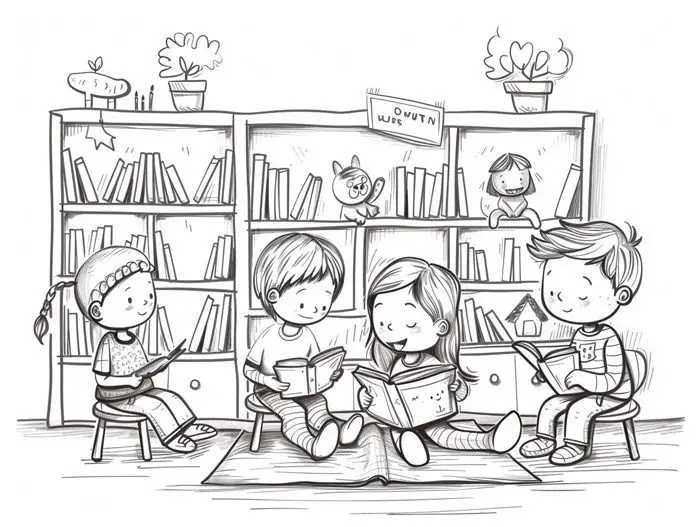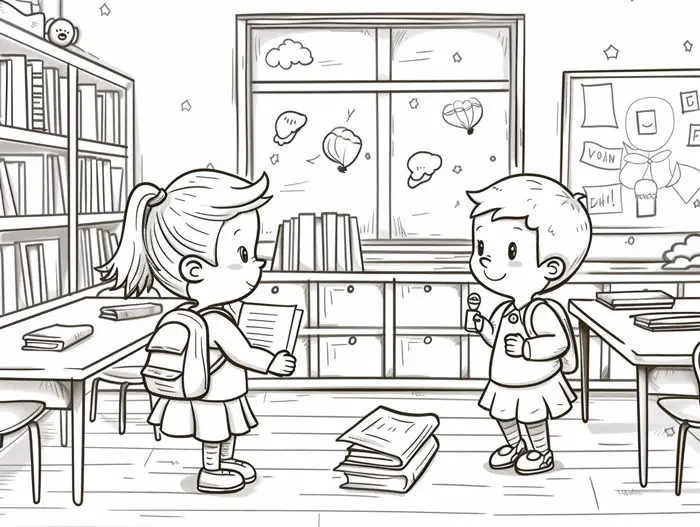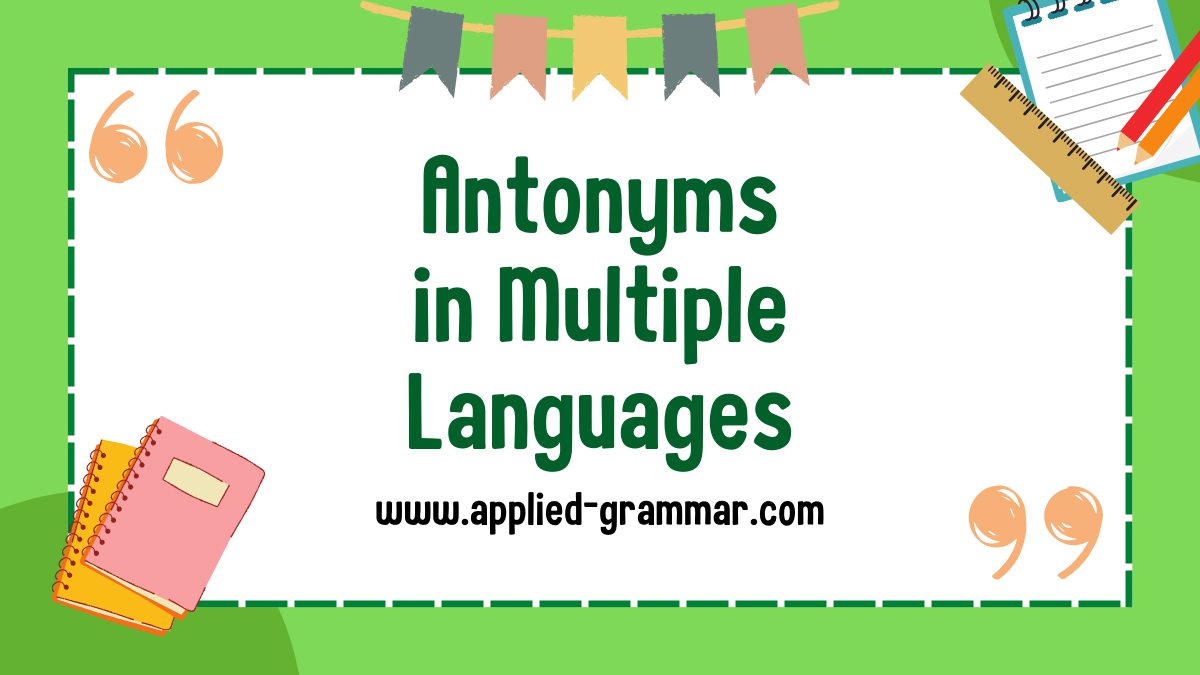Antonyms, or words that have opposite meanings, are an intriguing aspect of language. They allow us to express contrasting ideas and add depth to our communication. But have you ever wondered how antonyms differ across different languages and cultures? In this text, we will explore antonyms in multiple languages, comparing the opposites across various cultures.
Language is a reflection of culture, and antonyms provide a glimpse into the contrasting concepts valued in different societies. From the nuanced differences between British English (BrE) and American English (AmE) to the unique antonyms found in other languages, we will investigate into the rich world of opposites that exist worldwide.
Join us as we uncover the intriguing area of antonyms, examining how they shape our understanding of language and culture. Discover the diverse ways in which different languages express opposing ideas, and gain a deeper appreciation for the intricacies of communication across cultures. Let’s begin on this linguistic journey together and explore the fascinating area of antonyms in multiple languages.
Key Takeaways
- Antonyms are words that have opposite meanings and play a crucial role in expanding vocabulary and language skills.
- Learning antonyms enhances word comprehension, improves writing and communication, develops critical thinking skills, and boosts confidence.
- Common antonyms in English (US) include hot-cold, push-pull, teacher-pupil, good-bad, and happy-sad.
- Common antonyms in Spanish include alto-bajo, nuevo-viejo, and grande-pequeño.
- Common antonyms in French include grand-petit, jeune-vieux, and rapide-lent.
- Common antonyms in German include alt-jung, groß-klein, schnell-langsam, and leicht-schwer.
Understanding Antonyms

What are Antonyms?
Antonyms are words that have opposite meanings. In other words, they are the complete opposite of each other. For example, “hot” and “cold” are antonyms because they represent opposite ends of the temperature spectrum. Antonyms play a crucial role in language and communication by allowing us to express contrasting ideas and concepts.
Antonyms can be found in various parts of speech, including nouns, verbs, adjectives, adverbs, and prepositions. Learning antonyms can greatly enhance your vocabulary and language skills, as well as add depth and nuance to your writing and conversations.
Importance of Antonyms in Language Learning
Learning antonyms is not just about expanding your vocabulary; it also has several important benefits for language learning. Here are a few reasons why antonyms are crucial in developing your language skills:
- Enhanced Word Comprehension: Understanding antonyms can help you better understand the meanings of words. By knowing the opposite of a word, you gain a deeper understanding of its definition and usage. For example, knowing the antonym of “happy” (which is “sad”) can help you grasp the concept of emotions more effectively.
- Improved Writing and Communication: Antonyms can greatly enhance your ability to express yourself accurately and precisely. Instead of using negations or double negatives, you can simply use the appropriate antonym to convey the opposite meaning. This not only makes your writing more refined but also makes your communication more clear and concise.
- Critical Thinking Skills: Learning antonyms encourages you to think about the meanings and relationships between words. It involves analyzing language and identifying contrasting ideas. This develops your critical thinking skills and helps you cultivate a deeper understanding of language and its nuances.
- Confidence Building: As you learn and incorporate antonyms into your vocabulary, you become more confident in your language skills. This newfound confidence allows you to participate more actively in conversations, engage in storytelling, and write with ease and fluency.
To conclude, understanding antonyms is a valuable skill in language learning. It expands your vocabulary, improves your comprehension, enhances communication, develops critical thinking, and boosts your confidence. So, embrace the world of antonyms and keep exploring the fascinating area of language and its opposites. Happy learning!
Antonyms in English (US)
Antonyms are words that have opposite meanings, and they are an essential part of language learning. Understanding antonyms can greatly enhance your vocabulary and language skills. In this section, we will explore some common antonyms in English (US) and provide examples to help you grasp their meanings.

Common Antonyms
Antonyms can be found in various parts of speech, including nouns, verbs, adjectives, and adverbs. Here are some common antonyms in English (US) that you should be familiar with:
- Hot vs. Cold
- Push vs. Pull
- Teacher vs. Pupil
- Good vs. Bad
- Happy vs. Sad
These antonym pairs represent opposite meanings and can be used to express contrasting ideas. By understanding these antonyms, you can effectively communicate and express yourself more precisely.
Examples of Antonyms in English (US)
Let’s take a closer look at some examples of antonyms in English (US):
- High vs. Low
- Light vs. Dark
- Fast vs. Slow
- Big vs. Small
- Win vs. Lose
These examples demonstrate how antonyms can enhance your understanding of the English language. By learning and using antonyms, you can expand your vocabulary and improve your communication skills. It allows you to convey different shades of meaning and adds depth to your writing and conversation.
To conclude, antonyms play a crucial role in language learning. They provide context and clarity to words, enabling you to express yourself more effectively. By familiarizing yourself with common antonyms in English (US) and incorporating them into your vocabulary, you can enhance your language skills and become a more proficient speaker and writer.
Remember to embrace the world of antonyms and continue exploring the fascinating area of language and its opposites.
Antonyms in Spanish

Common Antonyms
In Spanish, just like in any other language, antonyms play a crucial role in expanding vocabulary and understanding the nuances of meaning. Learning antonyms can greatly enhance your language skills and allow you to express yourself more accurately. Here are some common antonyms in Spanish:
- Alto (high) – Bajo (low)
- Nuevo (new) – Viejo (old)
- Grande (big) – Pequeño (small)
- Caliente (hot) – Frío (cold)
- Bueno (good) – Malo (bad)
- Amor (love) – Odio (hate)
- Entrar (enter) – Salir (exit)
- Encender (turn on) – Apagar (turn off)
Understanding and using these antonyms will not only expand your vocabulary but also help you communicate with more precision and clarity.
Examples of Antonyms in Spanish
Let’s take a look at some practical examples of antonyms in Spanish:
- Día (day) – Noche (night)
- Feliz (happy) – Triste (sad)
- Rápido (fast) – Lento (slow)
- Arriba (up) – Abajo (down)
- Libre (free) – Ocupado (busy)
By familiarizing yourself with these antonyms, you’ll be able to express concepts and ideas more effectively in Spanish.
Remember, antonyms are not just about memorizing words with opposite meanings. They also help you understand the nuances of language, improve your writing and communication skills, and develop critical thinking abilities. Embrace the world of antonyms and continue exploring the fascinating area of language and its opposites.
- Antonyms play a crucial role in expanding vocabulary and language skills.
- Common antonyms in Spanish include alto-bajo, nuevo-viejo, and grande-pequeño.
- Examples of antonyms in Spanish include día-noche, feliz-triste, and rápido-lento.
- Understanding and using antonyms improves communication and critical thinking skills.
Antonyms in French
Antonyms play a crucial role in expanding vocabulary and understanding language. By learning antonyms, you not only enhance your communication skills but also develop your critical thinking abilities. In this section, we will explore common antonyms in French and provide examples to help you grasp their meanings.

Common Antonyms
In French, just like in any other language, there are numerous antonyms that can help you express opposites in a more precise and nuanced way. Here are some common antonyms you should know:
- Grand (big) – Petit (small): This antonym pair is used to describe the size of objects or people. For example, “Un grand chien” means “A big dog,” while “Un petit chien” means “A small dog.”
- Jeune (young) – Vieux (old): This antonym pair is used to describe age. For example, “Une jeune fille” means “A young girl,” while “Un vieux monsieur” means “An old man.”
- Rapide (fast) – Lent (slow): This antonym pair is used to describe speed. For example, “Une voiture rapide” means “A fast car,” while “Une voiture lente” means “A slow car.”
Examples of Antonyms in French
To help you understand how antonyms are used in context, here are a few examples of antonyms in French:
- Chaud (hot) – Froid (cold): “Je préfère boire du thé chaud en hiver” (I prefer to drink hot tea in winter) vs. “Je déteste nager dans l’eau froide” (I hate swimming in cold water).
- Bon (good) – Mauvais (bad): “C’est un bon livre” (It’s a good book) vs. “C’est un mauvais film” (It’s a bad movie).
- Haut (high) – Bas (low): “Le soleil est haut dans le ciel” (The sun is high in the sky) vs. “Le niveau de l’eau est bas” (The water level is low).
Remember, familiarizing yourself with antonyms in French will not only enrich your language skills, but it will also broaden your understanding of the culture and enable you to express yourself more precisely.
Continue exploring the intriguing area of antonyms in different languages to enhance your linguistic abilities and become a more effective communicator. Embrace the challenges and opportunities of learning new words and their opposites.
Antonyms in German
Antonyms are an essential part of learning a language, as they help us expand our vocabulary and improve our understanding of the language. In this section, we will explore some common antonyms in the German language and provide examples to further illustrate their usage. By familiarizing yourself with antonyms in German, you’ll not only enhance your language skills but also gain a deeper understanding of German culture. Let’s immerse!

Common Antonyms
In German, like in any other language, there are plenty of antonyms that can be used to describe opposite meanings. Here are some commonly used antonyms in German:
- alt (old) – jung (young)
- groß (big) – klein (small)
- schnell (fast) – langsam (slow)
- leicht (easy) – schwer (difficult)
These antonyms cover a range of concepts and can be useful when you want to express contrasting ideas. Whether you’re describing the size of an object or the speed of an action, having a good grasp of these antonyms will allow you to communicate more effectively in German.
Examples of Antonyms in German
To further illustrate the use of antonyms in German, let’s look at a few examples in context:
- heiß (hot) – kalt (cold)
- Die Suppe ist heiß. (The soup is hot.)
- Das Eis ist kalt. (The ice cream is cold.)
- gut (good) – schlecht (bad)
- Das Essen ist gut. (The food is good.)
- Der Film war schlecht. (The movie was bad.)
- schön (beautiful) – hässlich (ugly)
- Sie hat ein schönes Kleid an. (She’s wearing a beautiful dress.)
- Das Gebäude ist hässlich. (The building is ugly.)
These examples demonstrate how antonyms can be used in everyday conversations in German. By incorporating these antonyms into your vocabulary, you’ll be able to express yourself more precisely and effectively.
To conclude, learning antonyms in German is a valuable way to enhance your language skills and gain a deeper understanding of German culture. By familiarizing yourself with common antonyms and practicing their usage in context, you’ll become a more effective communicator in the German language. Keep exploring antonyms in different languages to broaden your linguistic abilities.
Conclusion
Expanding your vocabulary and understanding of a language is crucial, and one effective way to do so is by learning antonyms. In this text, we explored antonyms in German, discovering common pairs like alt-jung (old-young), groß-klein (big-small), and schnell-langsam (fast-slow). By providing examples of antonyms in context, such as heiß-kalt (hot-cold) and gut-schlecht (good-bad), we demonstrated how antonyms are not just words, but also reflections of the culture and society they belong to.
By familiarizing yourself with antonyms in German, you can enrich your language skills and gain a deeper understanding of the German culture. But, don’t stop there! Keep exploring antonyms in different languages to further enhance your linguistic abilities and become a more effective communicator.
Remember, learning antonyms is not just about memorizing words; it’s about grasping the nuances of language and culture. So, continue your journey of discovering antonyms in multiple languages, and watch as your language skills soar to new heights.
